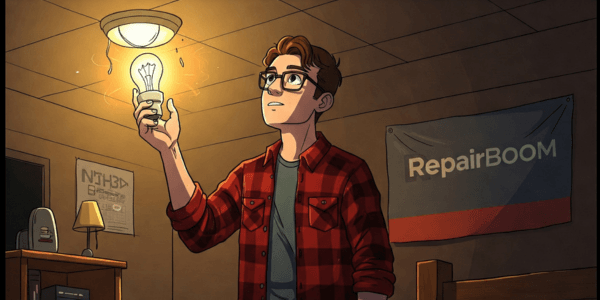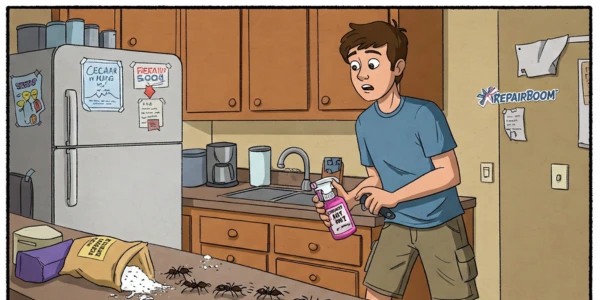Want to know how to clean mold fast? | Mold removal

- Want to know how to clean mold fast? | Mold removal
- Introduction – How To Clean Bathroom Mold
- Know Your Role – Information about mold for renters
- Recommended Supplies – How to Clean Mold – Mold Removal
- Part 1: how to clean mold – Mold Removal
- Part 2: Mix and Apply Your Solution to the Mold Area
- Part 3: Scrub, Rinse, and Finish off that mold
- How To Clean Mold – Final Thoughts
- FAQ – How to Clean Mold
Introduction – How To Clean Bathroom Mold
If you’re wondering about the best ways to remove mold from bathroom spaces, you’re not alone—bathrooms are a prime spot for mold growth due to their damp, warm, and often poorly ventilated conditions. Mold and mildew are surface-dwelling fungi that thrive in such environments, making it essential to know how to get rid of mold in bathroom areas like ceilings, walls, and grout. These fungi feed on organic materials such as drywall, grout, soap scum, and even dust, appearing as unsightly black, gray, or white spots (check the photos below for examples).
High humidity levels—above 60%—accelerate mold growth, making bathrooms particularly vulnerable, especially on walls, ceilings, and tiles where moisture often lingers. Water leaks from pipes or fixtures, even small ones, create persistent dampness that mold thrives on, while condensation on cold surfaces like windows or uninsulated walls adds to the problem. Low airflow, often due to poor ventilation or lack of exhaust fan use, traps this moisture, creating the perfect breeding ground for mold to flourish. For instance, black mold from bathroom grout is a common issue that can spread rapidly if not addressed promptly, as grout’s porous texture holds water and organic material like soap scum, providing an ideal food source for mold.
The good news? Mold in bathrooms rarely threatens your home’s structure, and you can clean mold effectively without professional help in most cases. Surface mold often stems from human causes like neglecting ventilation or not drying wet surfaces after showering, meaning how to get rid of mold is a skill you can master yourself. However, ignoring mold can lead to bigger problems, including health risks like allergies or respiratory issues, as well as potential costs for renters. Per your lease, clean mold issues caused by poor maintenance, such as bathroom ceiling mold from lack of ventilation, are typically your responsibility.
If you don’t act quickly with mold cleaning, landlords might deduct from your deposit or charge a cleaning fee during inspections. Take charge with the best ways to remove mold from bathroom spaces—don’t wait! This guide will show you how to get rid of mold in bathroom areas step by step, from cleaning to prevention, so you can keep your space mold-free for good.
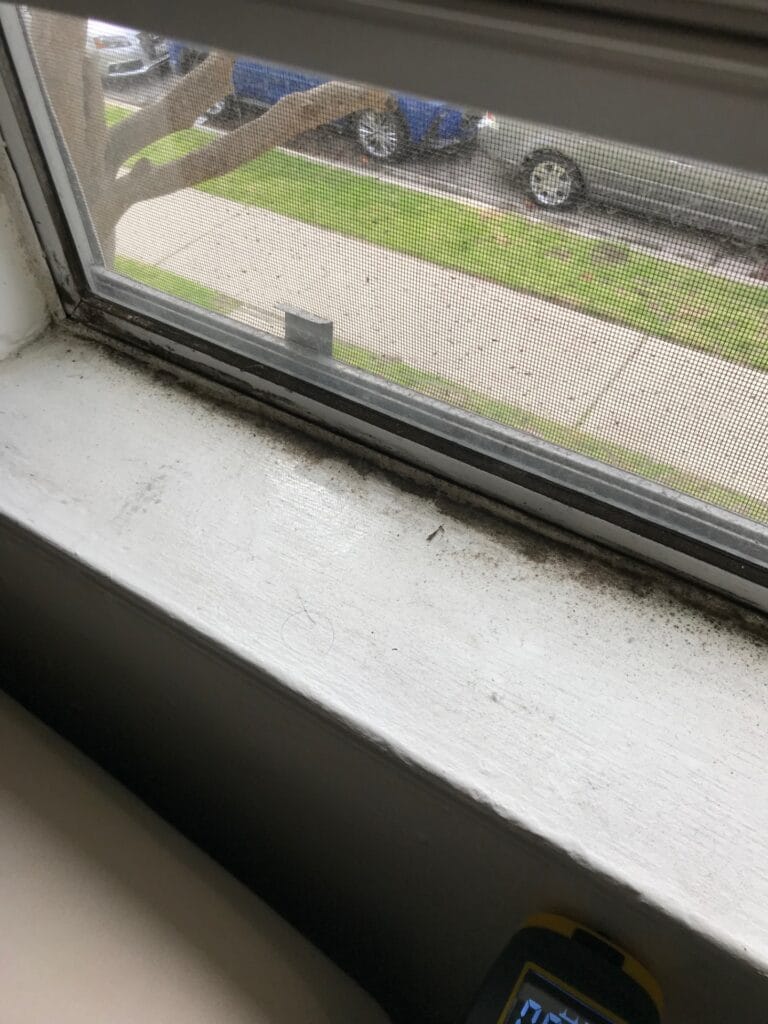
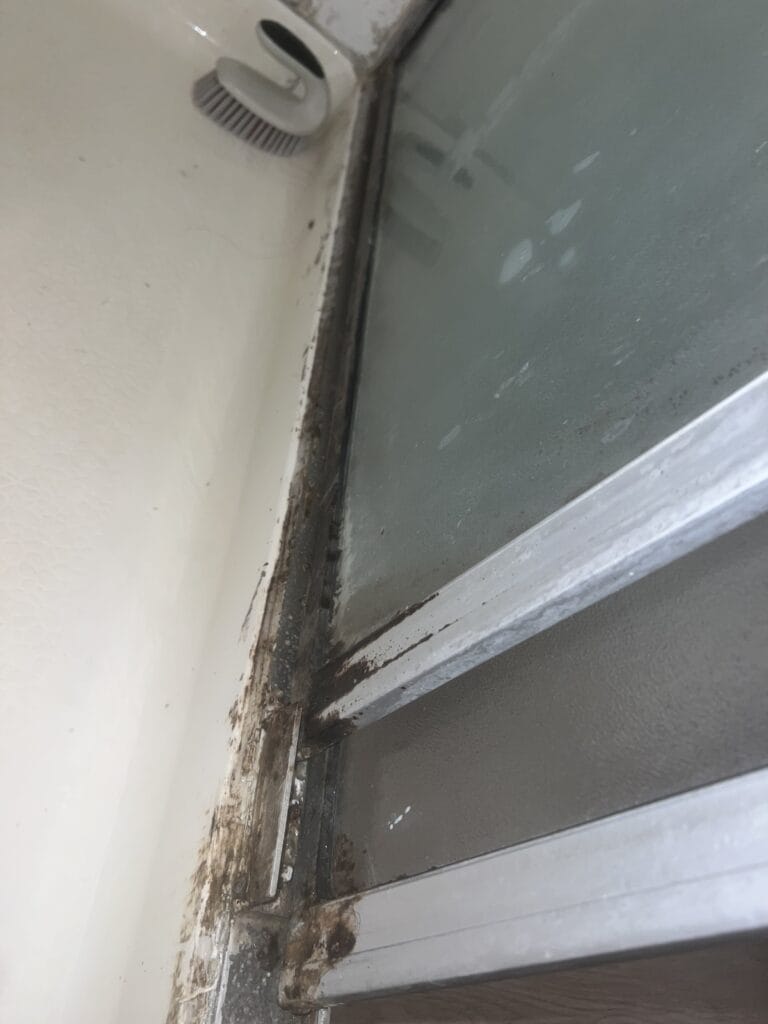
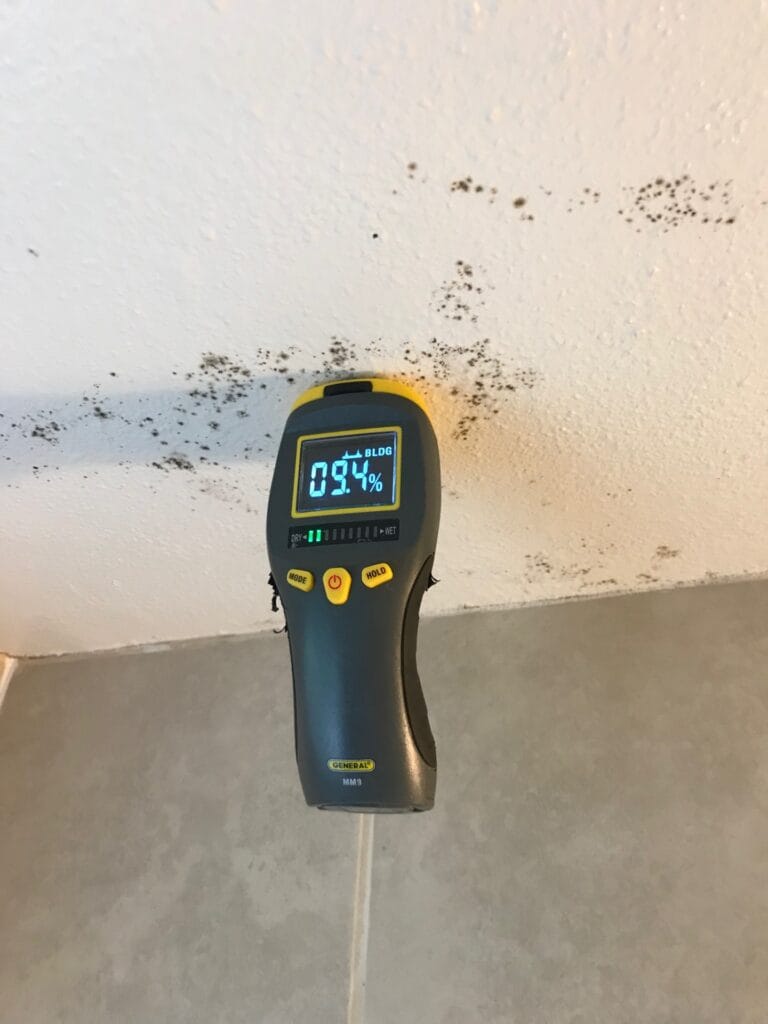
Know Your Role – Information about mold for renters

As a renter, you’re typically responsible for clean mold issues caused by daily habits, such as not ventilating the bathroom after showering, which can lead to black mold from bathroom grout or ceiling spots. Most leases require you to get rid of mold through regular maintenance, meaning you should follow the best ways to remove mold from bathroom areas outlined in this guide. For example, neglecting to clean mold on walls can result in landlords deducting cleaning fees from your deposit during inspections.
Document your efforts with photos after you get rid of mold to avoid disputes. If mold covers large areas or returns quickly despite mold cleaning, it may indicate structural issues like leaks—notify your landlord in writing immediately, as they’re generally responsible for such problems. Understanding how to get rid of mold in bathroom spaces and your home ensures you maintain a healthy rental and avoid costs.
Recommended Supplies – How to Clean Mold – Mold Removal
(Links posted are affiliate sponsored Links and purchases directly support our operation. We stand behind the products we recommend)
Part 1: how to clean mold – Mold Removal
Before diving into the best ways to remove mold from bathroom spaces, start by assessing the size of your mold problem to ensure safe and effective mold cleaning. If the mold covers more than half a wall, contact your landlord immediately—this could signal deeper issues like hidden leaks or structural dampness that need professional attention. For smaller, manageable patches, you can learn how to get rid of mold in bathroom areas like ceilings, walls, or grout with a DIY approach. Check for musty smells or discoloration, which often indicate mold growth in hidden spots.
Identifying surface mold is straightforward and a key first step in clean mold tasks: look for black, gray, or white spots in damp areas where moisture tends to linger. For example, you might spot black mold from bathroom grout, which often appears as dark speckles along tile lines, or notice black and gray patches on shower ceilings, walls, shower doors, or silicone seals—these areas thrive in moist spots and spread quickly if ignored. Mold can also manifest as fuzzy or powdery growth, sometimes with a musty odor, especially in corners where water splashes and air circulation is poor.
First, prioritize safety to clean mold effectively. Suit up with rubber gloves to protect your skin from irritants like bleach or mold spores. Then, wear safety glasses to shield your eyes, as bleach fumes or airborne spores can cause irritation quickly. Good airflow is crucial, so open windows wide or turn on an exhaust fan to keep air circulating while you work. Stuffy rooms can make fumes worse, and fresh air ensures you stay comfortable during mold cleaning.
For renters, it’s smart to document your efforts—take before photos of the mold spots on your shower ceiling or walls. After you get rid of mold, snap after photos to show your work, especially if your landlord might inspect for how to get rid of mold issues later. With these steps, you’re fully prepped to take charge of your mold cleaning process. Now, you can handle this mold and mildew cleanup with confidence, ready to win the fight against bathroom mold!
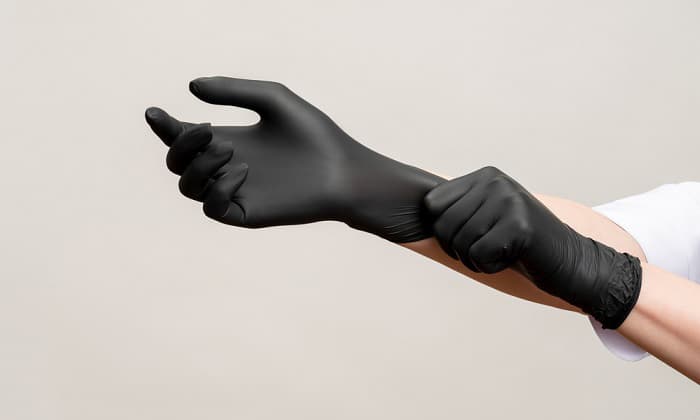
Part 2: Mix and Apply Your Solution to the Mold Area
Now that you’re prepped, let’s dive into how to get rid of mold in bathroom areas with an effective cleaning solution, focusing on the best ways to remove mold from bathroom surfaces like walls, showers, and grout. Start by grabbing a reliable product like Tilex Mold & Mildew Remover—it’s a no-fuss choice that excels at clean mold tasks and helps you get rid of mold for good. For walls, choose your method: spraying directly or using a sponge.
Hold the Tilex bottle 6–8 inches from the moldy area, whether it’s on walls or black mold from bathroom grout, and spritz until the surface is fully wet—this ensures the cleaner penetrates deeply to clean mold thoroughly. Alternatively, pour Tilex into a bowl, dip a sponge, and squeeze out excess liquid to avoid drips. Then, wipe the mold spots thoroughly, covering every inch to ensure you’re on track to get rid of mold completely. Set a timer for 5–10 minutes and let the cleaner sit—it needs time to break down the mold and mildew effectively.
Next, let’s tackle showers, tiles, and windows with the same mold cleaning power. Tilex is one of the best ways to remove mold from bathroom areas like shower doors, tiles, or window sills, where moisture often leads to growth. Spray Tilex from 6–8 inches away, ensuring even coverage on the affected areas, or use the sponge method: dip, squeeze, and wipe down thoroughly. For stubborn spots—like black mold from bathroom grout or tiles—grab a bristle brush and apply some elbow grease.
Scrub the glass, tiles, or grout lines firmly to lift the mold, focusing on areas where it’s deeply embedded. After scrubbing, set a timer for another 5–10 minutes to let the cleaner do its magic, breaking down the mold’s structure. Rinse the area with warm water to remove residue, then dry it completely with a clean towel to prevent regrowth. You’re killing it with these steps, mastering how to get rid of mold in bathroom spaces and ensuring a spotless, mold-free bathroom!
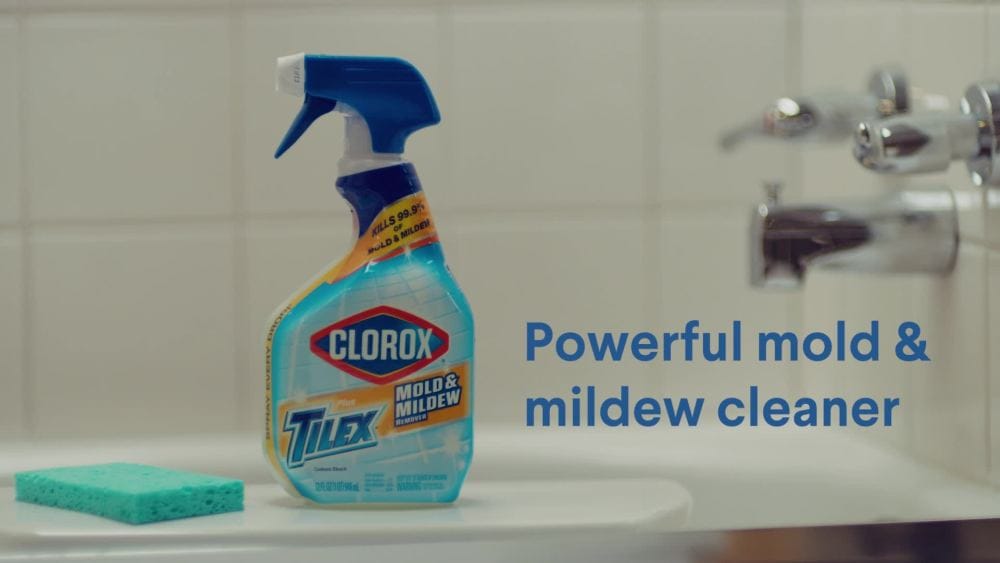
Part 3: Scrub, Rinse, and Finish off that mold
After letting the Tilex solution sit, it’s time to finalize the best ways to remove mold from bathroom surfaces by rinsing and drying the treated area, ensuring you clean mold thoroughly. Wet a clean cloth or sponge with warm water and gently wipe the area—whether it’s a wall, shower door, or black mold from bathroom grout—to remove the cleaner and loosened mold residue. If you’re working near a shower or sink, you can splash a little water to rinse instead, but be careful not to soak the wall too much, as excess moisture can worsen the problem. Focus on precision to avoid spreading spores.
Next, grab a dry towel and pat the area completely dry to get rid of mold for good. Drying is a key part of mold cleaning—leftover moisture can invite mold back, undoing your hard work. Pay extra attention to areas like grout or silicone seals, where water tends to linger, especially if you’re tackling black mold from bathroom grout. For larger surfaces like walls or ceilings, you might use a fan to speed up drying, ensuring no damp spots remain. Check corners and seams carefully, as these spots often trap moisture.
Inspect the area afterward: if any mold spots persist, repeat the process from Part 2, focusing on stubborn patches. By following these steps, you now know how to get rid of mold in bathroom areas effectively! You’ve successfully applied the best ways to remove mold from bathroom surfaces, leaving your space spotless and mold-free—great job on mastering how to get rid of mold!
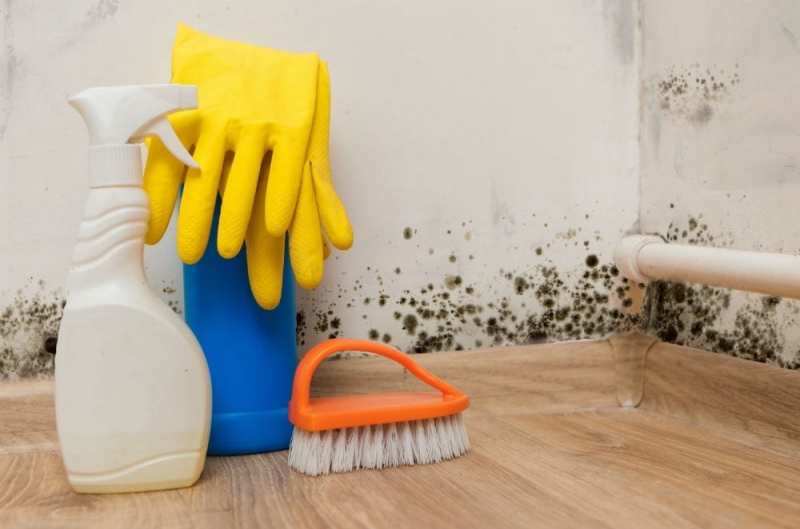
How To Clean Mold – Final Thoughts
You’ve learned the best ways to remove mold from bathroom spaces, but prevention is key to ensuring you get rid of mold for good. Start by boosting ventilation—run a bathroom exhaust fan or crack a window during and after showers to reduce moisture buildup, a major cause of black mold from bathroom grout and wall spots. Next, keep surfaces dry by wiping down wet tiles, walls, or shower curtains after use, starving mildew of its damp environment. Don’t ignore leaks—fix dripping faucets or pipes immediately to prevent water from pooling and feeding fungal growth, which can lead to recurring clean mold challenges.
Finally, control humidity with a dehumidifier in humid areas, maintaining dry air to stop mold in its tracks. By following these steps, you’ll master how to get rid of mold in bathroom spaces long-term, keeping your bathroom fresh and mold-free. Stay proactive with these habits, and you’ll avoid the hassle of frequent mold cleaning, ensuring a healthy space for years to come—great job taking charge!
FAQ – How to Clean Mold
What are the most common causes of mold growth in a bathroom?

Bathrooms are particularly susceptible to mold growth due to their consistently high levels of humidity and moisture. Common causes include poor ventilation, leaky faucets or pipes, condensation on walls and ceilings, and inadequate drying after showering or bathing. Organic materials like soap scum, shampoo residue, and even dust can also serve as food sources for mold.
How can I prevent mold from coming back after cleaning it?
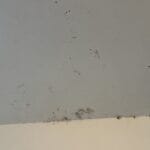
Preventing mold regrowth is crucial. The key is to control moisture levels in your bathroom. This can be achieved by ensuring good ventilation by using exhaust fans during and after showering or bathing, and opening windows when possible; promptly repairing any leaks in faucets or pipes; wiping down wet surfaces, such as shower walls and doors, after each use; maintaining a clean bathroom to reduce organic matter that mold can feed on; and considering using a dehumidifier in particularly humid environments
When should I contact my landlord about mold in my bathroom, and what is my responsibility as a resident?

For minor bathroom mold, it’s usually the resident’s responsibility due to typical moisture from showering and cleaning habits. Try cleaning it yourself first. Contact your landlord if the mold is extensive, returns quickly, spreads beyond the bathroom, or if you suspect a structural issue like a leak, is the cause. Document the mold and your cleaning efforts when contacting them. While routine bathroom mold is on the resident, larger issues might require landlord intervention.
What is the best way to ventilate my bathroom to prevent mold?

As a renter, you have the right to a safe and habitable living environment, which includes protection from significant mold issues that could affect your health. Your responsibilities typically include maintaining a clean living space and using provided ventilation (like exhaust fans) to minimize moisture buildup in the bathroom. If you discover significant or recurring mold growth that you believe is due to structural issues (like leaks or poor building ventilation) rather than your cleaning habits, you should promptly notify your landlord in writing. Keep records of your communication. Landlord-tenant laws vary by location, but generally, landlords are responsible for addressing structural problems that contribute to mold. However, you are usually responsible for mold that results from your failure to maintain reasonable cleanliness and ventilation. Understanding your lease agreement and local tenant laws is important.
What Are the Best Products for Bathroom Mold Cleaning?

For effective bathroom mold cleaning, use products like white vinegar, hydrogen peroxide, or a commercial mold remover(Tilex). Spray vinegar directly on the mold, let it sit for 10 minutes, then scrub with a brush and rinse. Hydrogen peroxide works similarly but is stronger for stubborn spots. Always wear gloves and a mask during mold cleaning to protect yourself, and ensure the bathroom is well-ventilated to avoid inhaling fumes.
How Do I Remove Black Mold from Bathroom Grout Safely?
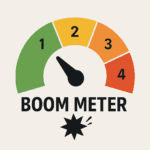
To safely remove black mold from bathroom grout, mix equal parts white vinegar and water in a spray bottle or Tilex. Spray the grout, let it sit for 15 minutes, then scrub with an old toothbrush. Rinse with water and dry thoroughly to prevent regrowth. For stubborn black mold from bathroom grout, use a baking soda paste, scrub, and rinse—always wear gloves and ventilate the area.

How to replace a smoke alarm battery | Free Guide – RepairBoom
How to unclog a drain in 4 easy steps | Free Guide – RepairBoom
